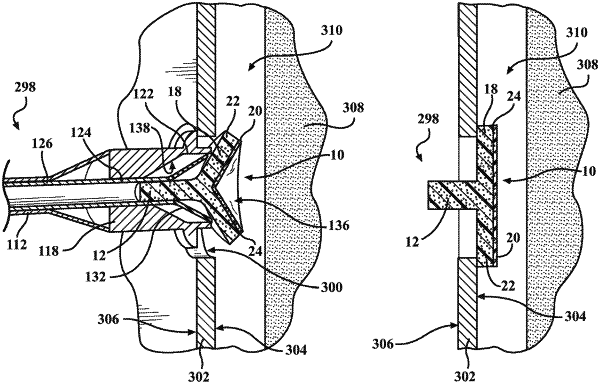| CPC A61B 17/88 (2013.01) [A61B 17/8872 (2013.01); A61B 2017/00628 (2013.01); A61B 2050/0072 (2016.02); A61F 2002/2885 (2013.01)] | 20 Claims |

|
15. A method of trans-nasally closing an opening in a base of a cranium having an inner surface and defining a cranial cavity with a surgical tool and a bioresorbable foam closure device, said method comprising the steps of:
providing the closure device having a stem portion having a proximal end and a distal end, and a head portion at the distal end having at least one dimension being larger than the stem portion, the stem portion comprising a first phase-separated polymer having amorphous segments and crystalline segments, and the head portion comprising a second phase-separated polymer having amorphous segments and crystalline segments, the first phase-separated polymer and the second phase-separated polymer being the same or different, wherein the stem portion is formed from a phase-separated polymer and has a porosity of greater than 80%;
deforming at least the head portion of the closure device from a free shape to a deformed shape;
inserting the deformed head portion of the closure device through a nasal cavity and through the opening such that the head portion is in the cranial cavity and the stem portion extends through the opening and into the nasal cavity; and
releasing the closure device such that the closure device at least partially reverts to the free shape such that the stem portion fills the opening and the head portion abuts an inner surface of the cranium as well as dura, thereby securing the closure device in position and sealing the opening.
|